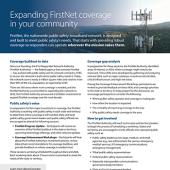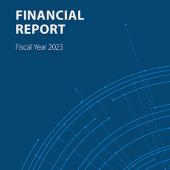This blog is a repost from the National Volunteer Fire Council’s Dispatch, originally published on June 4, 2024.
Volunteer firefighters are the heart of our nation’s fire services community. Over 80% of fire departments in the United States are either all or mostly volunteer organizations. These agencies are often smaller, rural, and have fewer resources. However, there are ways volunteer agencies can level the playing field, despite the challenges.
Answering more calls with fewer personnel
Firefighting ranks among the most demanding and dangerous volunteer roles, which can make it hard to find volunteers willing to take on the challenge.
Like other volunteer fire departments, the Toms River Fire Department in New Jersey has struggled to recruit and retain new volunteers. “It’s tough to juggle home and work and then go be a volunteer firefighter,” said Tim Carson, administrator for Fire District No. 2. “Our biggest challenge is finding people who want to do this job.”
At the same time, the agency has seen the number of calls rise. Once a small bedroom community on the Jersey Shore, Toms River now sees its normal population of 100,000 double during summer months. “We’re growing by leaps and bounds,” said Brian Kubiel, administrator for Fire District No. 1. “We have everything from non-hydranted areas to the waterfront to mansions to tiny bungalows.”
While calls used to number in the hundreds for Toms River Fire Department, the joint dispatch center now handles about 1,500 phone calls a month for a total of 3,000 fire emergencies and 15,000 EMS emergencies a year. Between Districts No. 1 and No. 2, the department is staffed by nearly 300 active volunteer members covering 9 stations.
No matter the size or budget of an agency, all firefighters need exceptional communications. This has always been true for voice communications, and it has become true today for data communications as well. Data is critical to modern day firefighting and is helping volunteer fire departments do more with less.
Speeding up decision-making and situational awareness
“If you don’t have a mobile data computer in your fire truck now, you’re way behind the times,” said Kubiel.
The benefits of reliable data communications are essential to response operations. Communications supervisor CJ Weinberger explained, “The officer in the fire truck can see every bit of information that the dispatcher can see — in real time — without having to ask. It speeds up decision making and speeds up situational awareness.”
From computer-aided dispatch, mapping tools, and video-streaming drones to asset and personnel tracking, firefighting’s data sources must rely on wireless connectivity.
Finding the right connectivity
The Toms River Fire Department first started using broadband services to connect laptops in their vehicles almost two decades ago. Since then, they’ve struggled with coverage issues in multiple areas in the town and beachside.
“We came up with the idea of trying FirstNet. We got 10 devices and tested them throughout the whole town to see if we could find dead zones,” said Weinberger. “FirstNet fixed the single dead zone we found within a week.”
FirstNet is the nationwide public safety broadband network developed through a public-private partnership between the federal government and AT&T. The network was designed to meet the unique needs of public safety operations. First responders have always-on priority and preemption, and the network is expanding coverage for first responders in rural areas.
After testing the service and coverage, the Toms River Fire Department installed 75 FirstNet-enabled laptops on its fire apparatuses.
Public safety priority on volunteer’s personal phones
Many Toms River volunteer firefighters use FirstNet on their personal phones through FirstNet’s subscriber-paid program.
“A lot of members switched because they were tired of not being able to get phone calls, and now they’re able to. And a lot of members switched for the cost,” said Carson. “Plus, we know we get priority service for first responders.”
All firefighters — volunteer and career — need the same access to reliable, secure, and fast communications. Volunteers can subscribe to FirstNet on their personal devices to get prioritized communications, increased capacity and coverage, and solutions designed for public safety operations.
Leveling the playing field
For smaller volunteer agencies, FirstNet levels the playing field by providing the same quality of services and access to resources and products that larger metropolitan agencies have.
Mike Williams has served for over 30 years in the San Marcos Pass Volunteer Fire Department, a rural volunteer agency in Santa Barbara, California, that uses FirstNet. He said, “Here we are, this little mom-and-pop fire department, and we have the same capabilities as a metropolitan fire agency such as New York, Boston, Chicago, or Los Angeles.”
Volunteer firefighters benefit from the same communications experience designed for public safety operations as career personnel do. “For smaller fire departments across this country, that makes FirstNet very useful. It also provides for quick interagency communications during mutual aid, particularly with the push-to-talk feature,” Williams said.
The volunteers also subscribe to FirstNet for their personal phones through the department, saving more than half in monthly billing. Williams added, “This also creates a terrific recruitment benefit for the volunteers.”




















